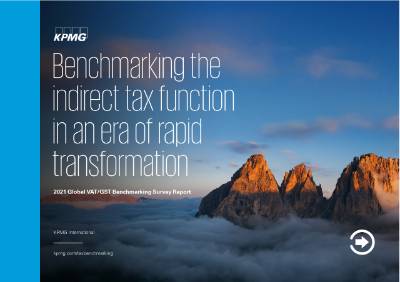Benchmarking is a powerful way for indirect tax leaders assess their function’s current structure, identify leading practices among peers, and uncover how changes made now can prepare them for the challenges and opportunities of the future.
This global benchmarking report offers a snapshot of the structure, governance and performance measures of indirect tax — and delivers insights on how these functions expect their compliance models to change in the next 3 years.
Shrinking headcounts
69 percent of all survey respondents have a global headcount of just 1–10 people in their indirect tax teams; in 2013 only 55 percent of respondents had a team of less than 10 people.
Managing significant throughput
67 percent were managing ‘throughput’ (that is, the sum of output taxes paid and input taxes claimed) in excess of USD200 million annually with 32 percent managing throughput in excess of USD1 billion.
Managing multiple taxes
Globally, many of these indirect tax teams are also managing multiple forms of high-profile taxes (in addition to VAT/GST), including, US state and local taxes (61 percent), digital services taxes (51 percent), balance sheet accounts & reconciliations (46 percent) and trade & customs (46 percent).
This survey has been conducted on a regular basis to track the evolution of indirect tax benchmarks globally. KPMG’s Global Indirect Tax practice expects that this, and subsequent surveys, will help companies enhance performance through greater visibility and the setting of more challenging indirect tax performance goals.
As only the things that get measured are likely to improve, it is critical that all multinational businesses seriously consider what the most appropriate qualitative and quantitative measures are for their business, put in place a program of continuous improvement and demonstrate over time how real business value can be generated through better indirect tax management.
Survey methodology
From December 2020 through to the end of March 2021, KPMG conducted a survey of indirect tax professionals working for 233 corporates across a wide range of industry sectors around the world, of which over 50 percent have turnover in excess of USD5 billion.
Since 2011, regular iterations of this survey have charted the evolution of indirect tax departments and identified operational benchmarks for high-performing tax teams. The results of past iterations of this survey are compared where appropriate to provide trend analysis.


